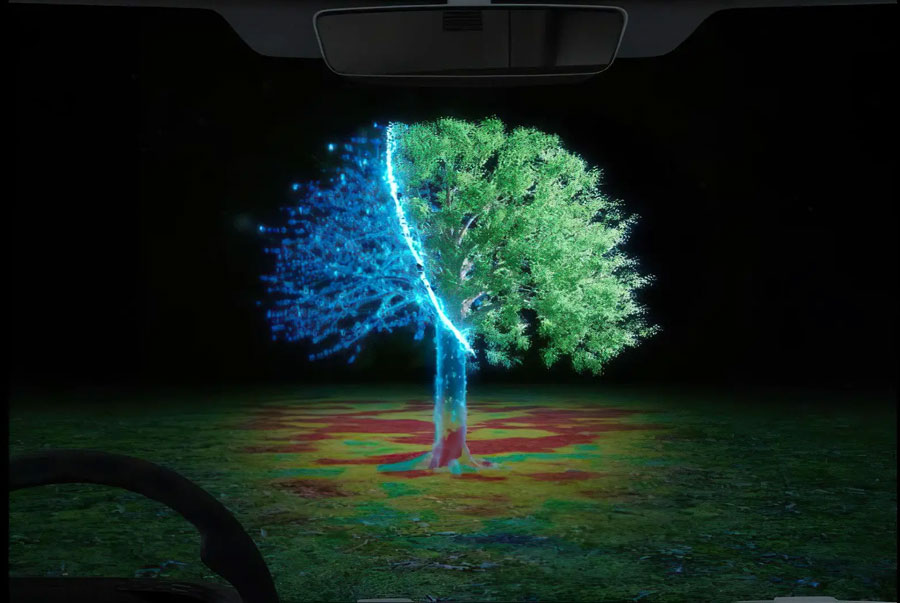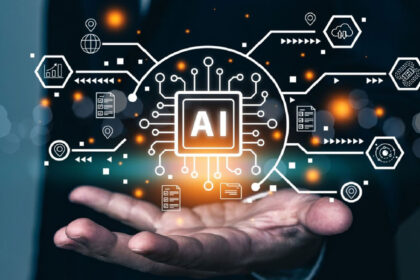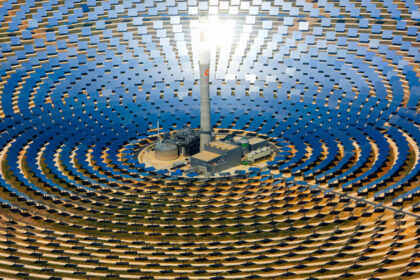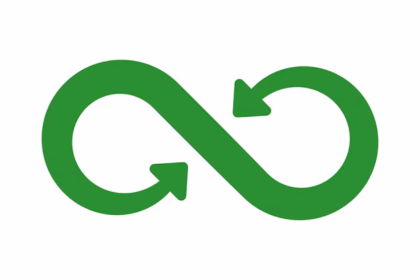“If there is anything to fear, it is the waves of the tsunami because it takes away everything from us and we cannot do anything but just sit and stare at a difficult situation that brings trouble or destruction, The harder the waves hit the land, the harder it strikes the people of the land”.
Hi readers! Here is another innovation out of tsunami of technology reported on August 3rd, 2023, in “SciTechDaily” by researchers from Purdue University who are developing a patent-pending method called HADAR to revolutionize machine vision and perception in the field of robotics.
HADAR is an abbreviation for Heat-Assisted Detection and Ranging while pitch darkness is derived from the earlier expression “pitch black”, which is a variant of “as black as pitch”. Pitch is a dark sticky wood tar, a viscous black or dark brown substance obtained as a residue from the distillation of wood tar or turpentine.
HADAR influences the systems that deals with thermal physics, infrared imaging, and machine learning perceptive texture (which is the visual system that encodes and interpret images), depth, and physical attributes of scenes and objects enabling them to be seen even in challenging lighting conditions.
This pioneering innovation for which the patent is pending for approval, has the ability to distinguish between texture and depth, and comprehend the physical characteristics of individuals and surroundings. This means that Scientists at Purdue University are pushing the future of robotics and autonomous systems with their newly developed innovative method that will improves typical machine vision and its insight.
Professor in the Elmore Family School of Electrical and Computer Engineering, and a research scientist have jointly developed HADAR that appeared on the cover of July 26th, 2023, issue of Nature.
The authors are expecting that one in 10 vehicles will be automated and there will be 20 million robot helpers that serve people by 2030. Each of these representatives will collect information about their surrounding scenery through the most advanced sensors to make decisions without human intervention while simultaneous observation of the scene by numerous representatives will essentially be prohibited.
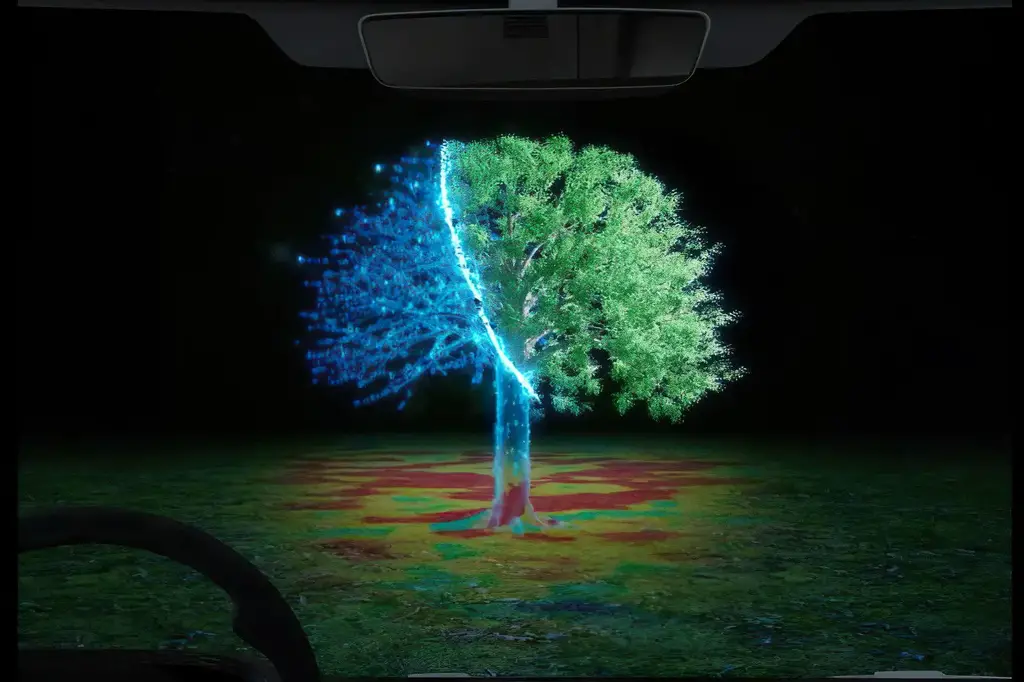
HADAR concept: View of a tree from a moving vehicle in the pitch-black night. Credit: Purdue University
Traditionally, active sensors like LiDAR (light detection and ranging), radar, and SONAR (Sound Navigation and Ranging which are primarily used for exploring and mapping the ocean because sound waves travel deep into the water compared to radars and light waves) emit signals and subsequently receive them to collect 3D information about a scene. But, these methods are beset with drawbacks that increases as they are scaled up (in size, amount and importance) including signal interference and risks to people’s eye safety. Compared to this, video cameras that work on sunlight or other sources of illumination are advantageous nevertheless, low-light conditions during dark nights, fog, or rain creates serious hindrances.
Traditional thermal imaging is an unresponsive/insensitive sensing method that collects invisible heat radiation originating from all objects in a scene. It can be sensed through darkness, harsh stormy weather, and solar glare. But the challenge that obstruct its use is that “objects and their environment constantly emit and scatter thermal radiation” that leads to texture-less images which cannot be compared and thus, are commonly known as the “ghosting effect”. The scientists from Perdue University says, that:
“Thermal pictures of a person’s face show only contours and some temperature contrast; there are no features, making it seem like we are seeing a ghost. This loss of information, texture, and of features is a roadblock for machine perception using heat radiation.”
HADAR combines thermal physics, infrared imaging, and machine learning to pave the way to fully reflexive and physics-informed machine learning: PIML (which is an emerging prototype that aims to leverage/control the wealth of physical knowledge for improving the effectiveness of machine learning models). Please see video at https://youtu.be/WKrzmaixAC0
The work from Purdue University builds the information on the thermal perception to show that pitch darkness carries the same amount of information as broad daylight. Since humans over the Millenia has developed the bias toward the daytime hence, PIML perception of the future will overcome this age-old contrast between day and night.
Scientists says “HADAR can forcefully recover texture from disorder/untidy heat signal and accurately sort out temperature, emissivity (which is a measure of an object’s ability to emit infrared energy), and texture (TeX) of all objects in a scene. It sees texture and depth through the darkness as if it were day and also perceives physical attributes beyond RGB (model in which red, green and blue colors of light are added together in various ways to reproduce a broad array of colors), visible imaging, or conventional thermal sensing which made it possible to see through pitch darkness like broad daylight.”
The team tested HADAR TeX vision using an off-road nighttime scene and observed that “HADAR TeX vision recovered textures and overcame the ghosting effect”. It recovered fine textures such as water ripples, bark wrinkles, and ducts in addition to details about the grassy land. Additional improvements to HADAR includes improving the size of the hardware and the data collection speed.
“The current sensor is large and heavy since HADAR algorithms require many colors of invisible infrared radiation, Scientist from Purdue University says, “To apply it to self-driving cars or robots, we need to bring down the size and price while also making the cameras faster. The current sensor takes around one second to create one image, but for autonomous cars, we need around 30 to 60 frames per second.”
HADAR TeX vision’s initial applications are automated vehicles and robots that interact with humans in complex environments. The technology could be further developed for agriculture, defense, geosciences, health care, and wildlife monitoring applications.
Did you see dear readers how fast the world and the technology is changing: faster than our imagination. How much we are prepared to face such a world is the biggest challenge,
“We live in a society exquisitely dependent on science and technology, in which hardly anyone knows anything about science and technology.” Carl Sagan: an American astronomer, planetary scientist,
See you next week, take care, Bye.


